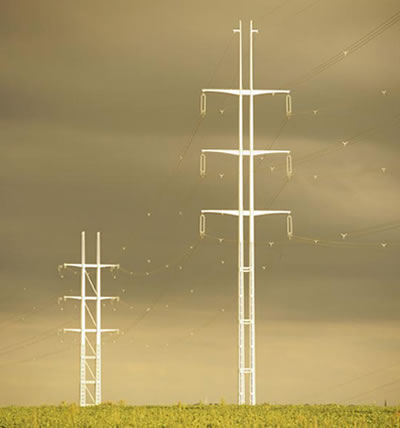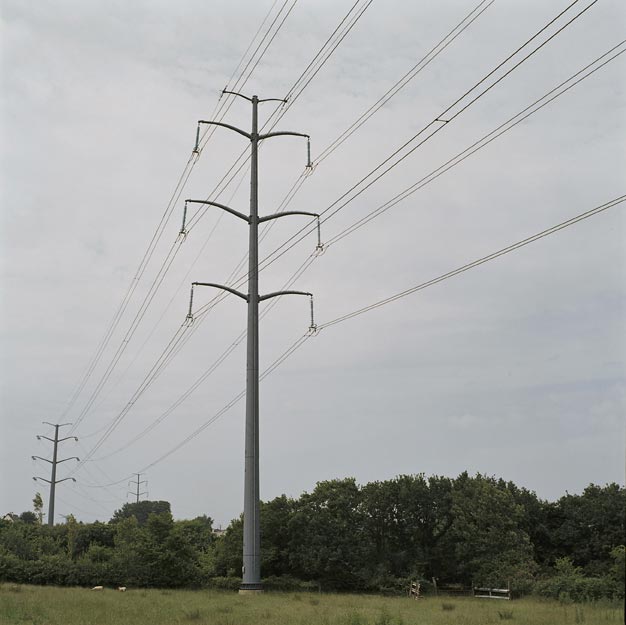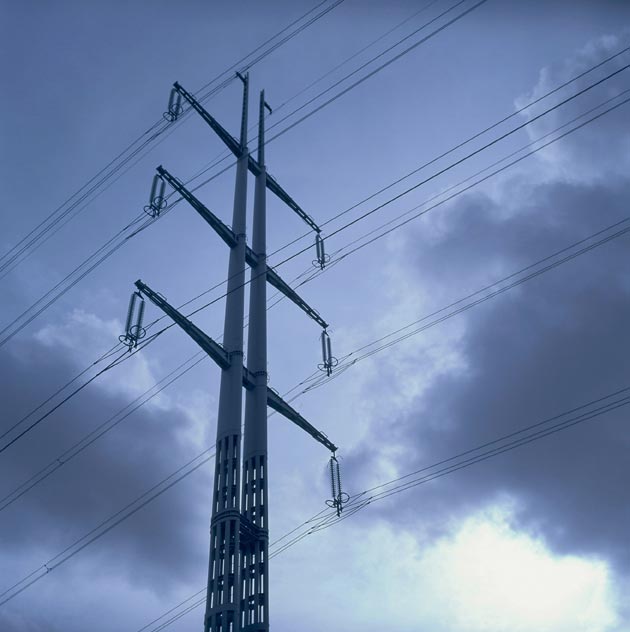September 08, 2008
 The national electricity grid
The national electricity grid

The latest French design of 400kv electricity pylon. Credit in both senses to EDF. More on pylons below.
Reporter Matthew Wald in the IHT:
Expansive dreams about renewable energy, like former Vice President Al Gore's hope of replacing all fossil fuels in a decade, are bumping up against the reality of a [US] power grid that cannot handle the new demands.This won't be a surprise to regular readers of this blog.
[snip]
The grid today, according to experts, is a system conceived 100 years ago to let utilities prop each other up, reducing blackouts and sharing power across small regions. It resembles a network of streets, avenues and country roads.
"We need an interstate transmission superhighway system," said Sudeen Kelley, a member of the Federal Energy Regulatory Commission.
I wrote a year ago :
If I'm right, what's missing in the Northern Great Plains is a comprehensive, public-sector, interstate, common-carrier, electricity grid.Now which candidate has better ideas on the problem?
Obama website:
Obama will ... begin transition to a new digital electricity grid.McCain website:
John McCain will work to reduce red tape to allow a serious investment to upgrade our national grid to meet the demands of the 21st century .... we will also need to deploy SmartMeter technologies.They both recognize the problem. Obama's "digital grid" is annoying New Age geekspeak; electric current must be continuous, what he presumably means is more intelligent grid management. McCain is right to mention intelligent consumer metering, which is one of the the keys to a more adaptive supply management.
The key difference is how they propose to go about it. All McCain offers is more of the deregulation that brought you Enron's manipulations. The rest is just pious hopes. Obama may invest political capital to ensure muscular federal intervention, like FDR or Ike, to do the necessary. We can't be certain : because nobody in the campaign has forced him to reveal his hand on most of his policy portfolio, apart from a short period in the primaries when there was an actual debate on health care. McCain has clearly decided to avoid issues in favour of personalities.
But let's wonk on regardless. Creating a proper interstate grid can only be done with leadership from the federal government. The grid authority could be privately or publicly owned, and the public component could be federal or state-based. But it must be tightly regulated, since the grid is not only a technical monopoly and common carrier, but the market-maker for competing suppliers and consumers. It should therefore have a legal mandate to ensure development and security of electricity supply, promote genuinely (non-Enron) competitive markets, and respect the environment. The UK and surprisingly Texas offer successful institutional models - though go to France for the environment.
The case illustrates Mark's answer to his correspondent who wants to get back to policy issues. The policy side of the campaign is the sound of the left hand clapping. Posts like this one are directed at the Obama administration, not the campaign.
***************************************************
More on pylons
The EDF is rare and possibly unique among big utilities in seriously
exploring new transmission tower designs to reduce visual nuisance. The
model in the photo - "Roseau", or reed - is part of its second
generation of tubular towers; the other is the asymmetric "Fougère" - heather
fern - which is fun but might become irritating after a few years. The
first generation was the workmanlike "Muguet" - lily of the valley - ,
which is a common sight:

EDF has formidable engineering resources and reputation, and you can take it that these designs meet high specifications, including 170 km/hour winds. But it is coy on costs. The designer Marc Mimram gives the unit cost of the complex "Roseau" pylon as €580k. The typical cost of a traditional 400kv backbone line in France was €600k/km in 2002, of which about a third went on the pylons, making €70k each. Say €100k now.
Turning transmission lines from eyesores to acceptable features of the landscape is expensive, but it's still much cheaper than burying them: a staggering €37m/km for the same voltage in the UK according to the same report. In many places the extra cost must make the difference between local acceptance and veto. You can also compensate the visual nuisance of new high-voltage lines with the much cheaper burial of lower-voltage ones.
Bonus update
There's been a most gratifying response to this post, in particular from Matt Yglesias on the design issue. So here's another photo of the "Roseau" pylon showing more detail:



